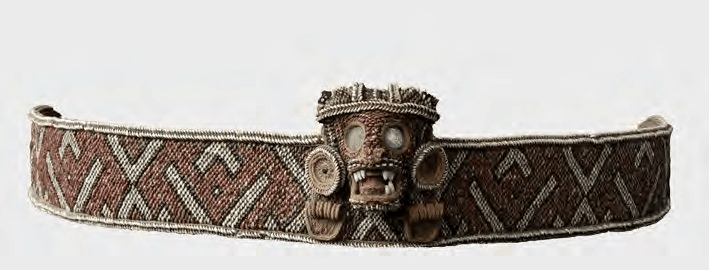Although far shorter and featuring cruder artwork, Juan de Santa Cruz Pachacuti-Yamqui Salcamayhua's "An Account of the The Antiquities of Peru" is a fascinating historical source on the Incas. Written from the perspective of an elite Indian Christian, it offers an interesting perspective on the precolonial past with some similarities and differences from Guaman Poma's more detailed chronicle. Unlike Guaman Poma, there is no indication that this Indian writer had an obvious political motive for writing his brief account, except perhaps as a Christianized indigenous perspective on the rise and fall of the Incas. Indeed, the author's Christianity has profoundly shaped and perhaps distorted the history of the Incas who, at various times, were presented as opponents to the huacas, idolatry and demons which had plunged Peru into heathenism before the Spanish conquest.
It would appear that our chronicler hear believed Viracocha may have been St. Thomas, the apostle, an idea also found in Guaman Poma's work. According to this Christianized interpretation of Viracocha, the apostle promoted the worship of the Creator or universal Creator while opposing idolatry and the worship of huacas throughout Peru. This Tonapa, another name reported for this figure Juan de Santa Cruz merges with St. Thomas, is attributed an important role in the origin of the Incas since it is his staff that is inherited by Manco Capac. In other words, the Incas were, early on, at least, exposed to some ideas of a single God or Creator. The chronicler, however, appears to consistently mistake the worship for the Sun with the worship of the Creator, causing a number of problems in his portrayal of this or that Inca ruler as an enemy to the huacas. Nonetheless, some of his reports of Incas opposed to huacas from one province or another may reflect historical moments in which the religious policy of the Inca state opposed those of other peoples or provinces. Other moments in the lives of the Inca seem a little questionable or perhaps of Biblical inspiration. For instance, the report of Manco Capac sacrificing his son to receive a sign from the Creator bears an uncanny resemblance to the Judaeo-Christian Abraham.
Overall, this brief account provides the usual overview of the lives and deeds of the Incas, with some occasionally rich detail, report of a miracle or exceptional event. The Incas were occasionally corrupt and unjust, abusing, exploiting and promoting idolatry. Others, however, established good laws and supported the worship of the Creator. By the end of the Empire, Huascar, portrayed as more sinful and incompetent than Atahualpa, is presented as so corrupt as to allow men to have their way with the virgins in the square of Cuzco. The Spanish conquest, therefore, helps to reestablish monotheism and the "true faith" as the "Viracochas" return with the Bible. Perhaps the believe that Tonapa was St. Thomas was a way to reconcile the brutal shock of two different worlds when Pizarro arrived? By accepting Christianity, they were just returning to the ways of Tonapa that they had deviated from under the Incas. Does this also help to understand what the sources are indicating when they claim Tonapa carried a book with him during his travels? Was this mysterious "book" in precolonial Peru a reference to what they would later know as the Bible? Or some other type of holy text and writing besides the usual records in khipu?


No comments:
Post a Comment